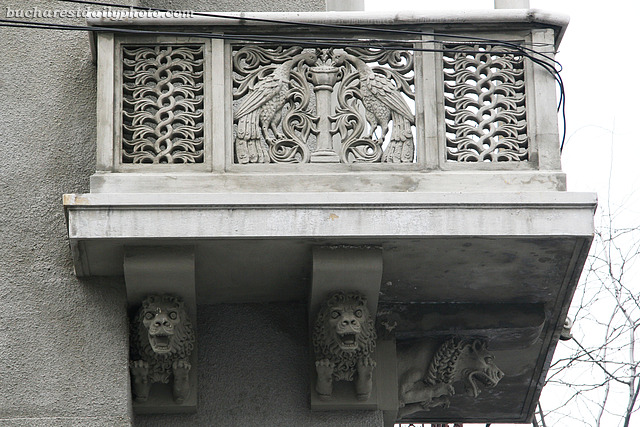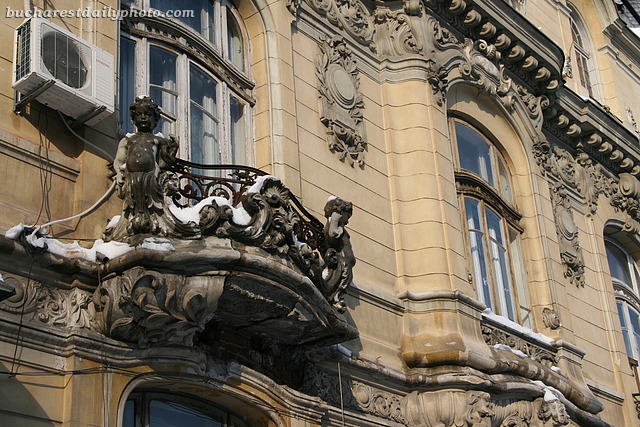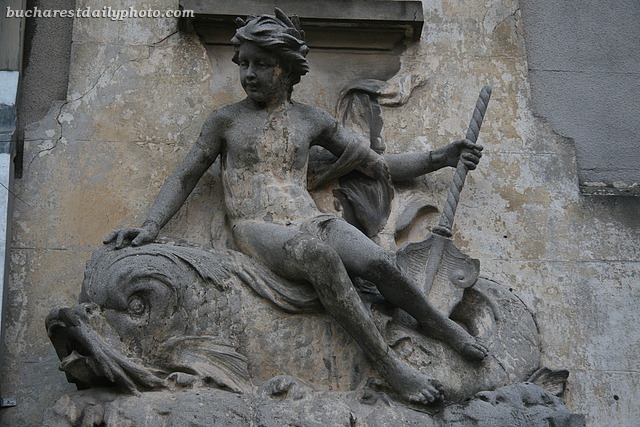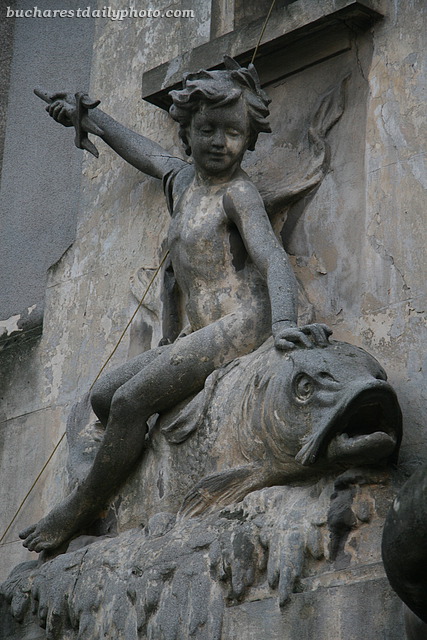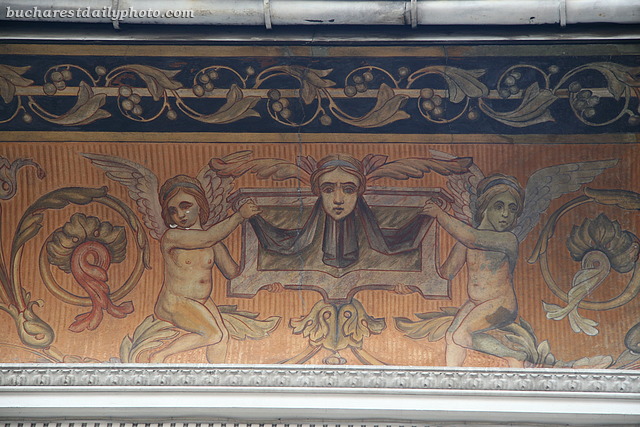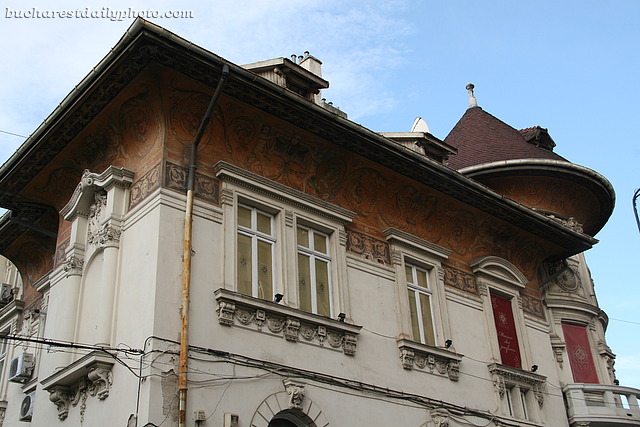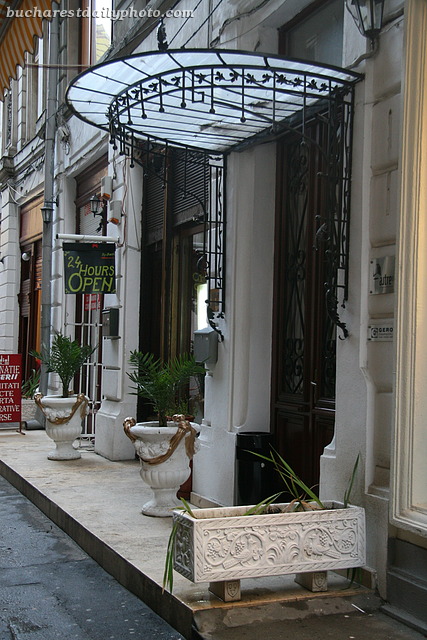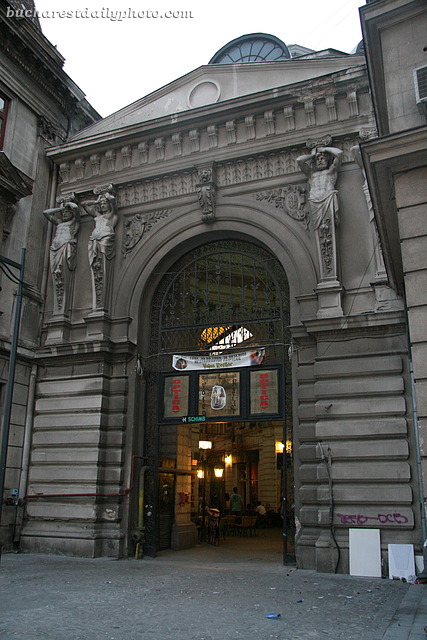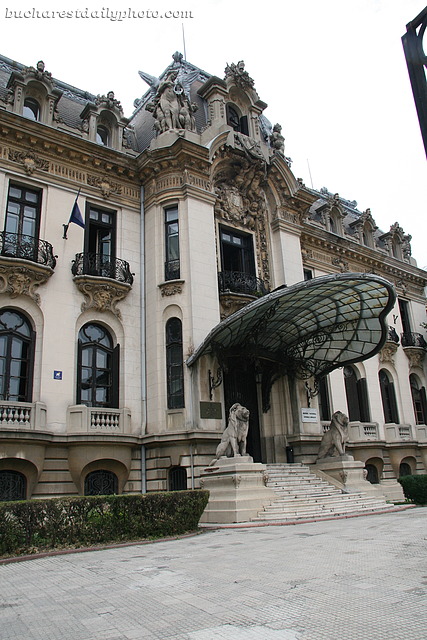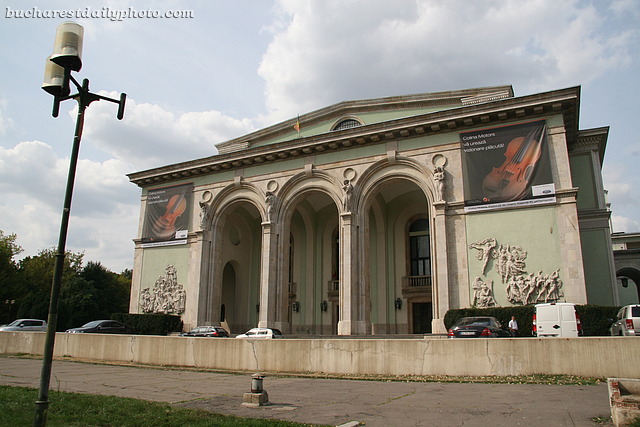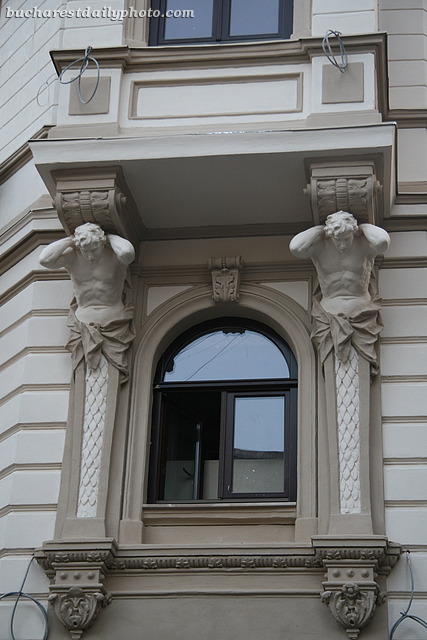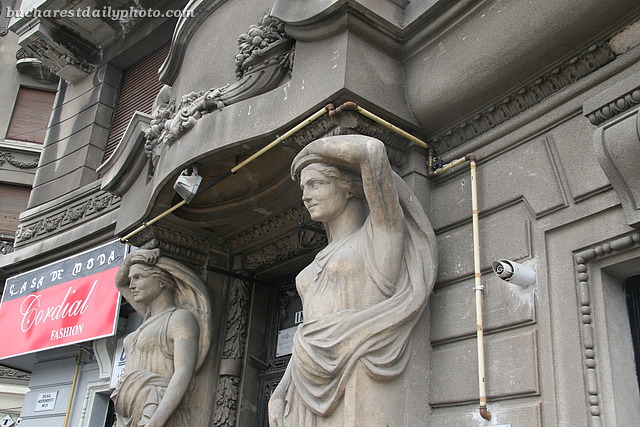What do lions have to share with peacocks? It seems the answer is: the balcony of a house on Maria Rosetti Street.
Finally! The temperature is above zero. To be more exact my outside thermometer is registering 5 degrees Celsius at this moment (2PM). It’s the second time the temperature raised above zero in the last week (the other time it happened was on Tuesday). Snow’s melting and walking the sidewalks in the city center feels like being in the shower because of the water dripping from the roofs. Which is why the statues in today’s photographs look like they just took a bath.
These two lovely statues that are the subject of today’s photos decorate the facade of Bucharest’s Astronomical Observatory, located on Lascăr Catargiu boulevard. The building that houses the observatory was the property of an admiral, Vasile Urseanu, hence the marine theme.
Today’s photo shows a close-up of an outside mural that belongs to a beautiful house I spotted on one of my Sunday strolls. According to one source I found on the web (in Romanian), painting murals on the outside of houses was a fashion imported from Italy, present in Bucharest between the years 1905-1915. The house is on Take Ionescu Street, close to Lahovari Square.
Today is Theme Day at the City Daily Photo community, a monthly event that happens the first day of every month, when all participating blogs will post a picture that relates to the theme day’s description. Today’s theme is Doorways. Click here to view thumbnails for all participants
This style of doorways, covered with glass awnings in wrought iron frames became very popular in Bucharest at the end of the 19th century. You can still find many houses in the historic quarters of Bucharest that have these French inspired style doors with awnings. The most flamboyant glass awning in Bucharest is the one at the Cantacuzino Palace which I already introduced in a post in September.
I’ve already showed you photographs of the Macca-Vilacrosse Covered Passage but I can’t help showing it to you once more. Actually this time I’m posting a shot of the entrance to the passage from Eugen Carada Street, across from the National Bank in the historic Lipscani district.
Just so you don’t think that Bucharest is only made up of communist architecture, dangling cables and graffiti I decided that the time has come for me to post another postcard picture. This is Cantacuzino Palace, located on Calea Victoriei, designed by the architect I.D.Berindei in French Baroque style and built between the years 1899-1902. The facade is dominated by the main entrance; above it there is a giant shell-shaped porte-cochere and two stone lions guard the stairs and the door. George Enescu – Romania’s most famous composer – lived here for a while. The building belonged to his wife Maria Cantacuzino. In fact Enescu preferred a life of simplicity and he and his wife chose to live in a smaller town house that previously housed the administrative staff of the palace; this house is located behind the main palace. Nowadays the palace houses the George Enescu Museum which displays the musician’s manuscripts, scores of his compositions and personal belongings like one of his first violins. I still remember the impression it made on me when I saw the building for the first time. I think I was about ten when my aunt took me and my cousin on a stroll on Calea Victoriei. I thought that this must be the most beautiful building in the world 🙂
Bucharest’s Opera House is the main venue for seeing opera and ballet performances in Bucharest. Their annual season runs from October to June and tickets are usually dirt cheap, a far cry from tickets to Madonna’s concert 🙂 They tend to stick to a classical repertoire. Due to lack of funding the sets are not too spectacular but performances are of a high quality. The edifice was built in the years 1952-1953 after the design by a group of architects led by Octav Doicescu. These were the first years of communism in Romania and the style condoned by the regime was called “socialist realism“, the official artistic movement of the Soviet Union. The socialist realism required an artificial return to the classical theme, away from the modernist tendencies of the day, which is why the Opera building has a neoclassical design. One example of the socialist realism touch, that can be seen in the photo, are the bas reliefs on the facade. The interior is in the tradition of the 18th century Italian Opera, with a central dome and three tiers of balconies. It can seat 1200 people. The inauguration of the new building of the Opera House was celebrated by a performance of Tchaikovsky’s Queen of Spades on January 9th, 1954 followed by the ballet Coppelia the following night.
Compared to the charming ladies from yesterday, who seemed to be very much at ease with bearing their load, these guys are doing some heavy lifting. Look at how their abdominal muscles are showing. I hope they won’t be left with back problems. Again, according to wikipedia, “The later male counterpart of the caryatid is referred to as a telamon (plural telamones) or atlas (plural atlantes) – the name refers to the legend of Atlas, who bore the sphere of the heavens on his shoulders.” The balcony belongs to a house on Smârdan Street.
These graceful ladies are carying a heavy burden on their heads, the balcony above the entrance to the Adriatica-Trieste building in United Nations Square. According to wikipedia, it was the Greeks who came up with the idea of using female figures as decorative supports instead of columns or pillars. They are called caryatids from the Greek word “maidens of Karyai”, an ancient town of Peloponnese which had a famous temple dedicated to the goddess Artemis.
